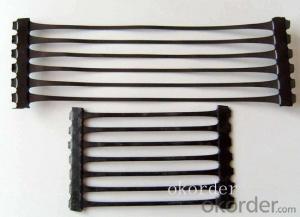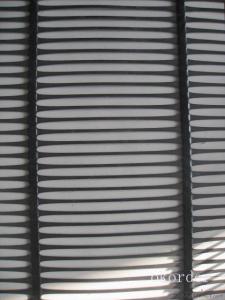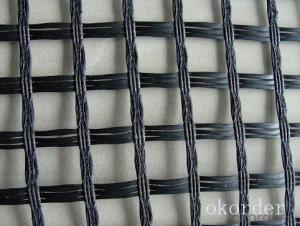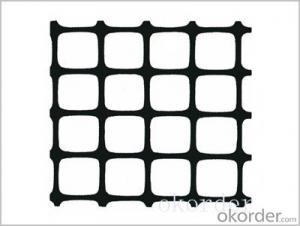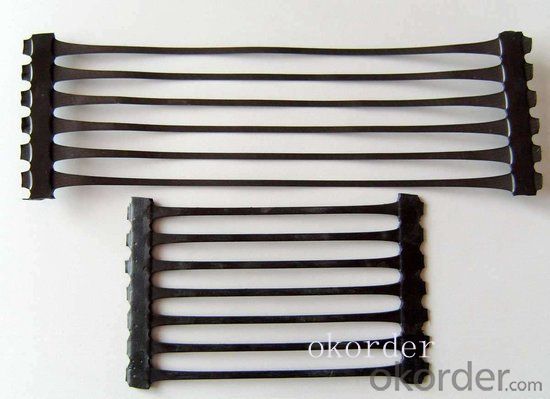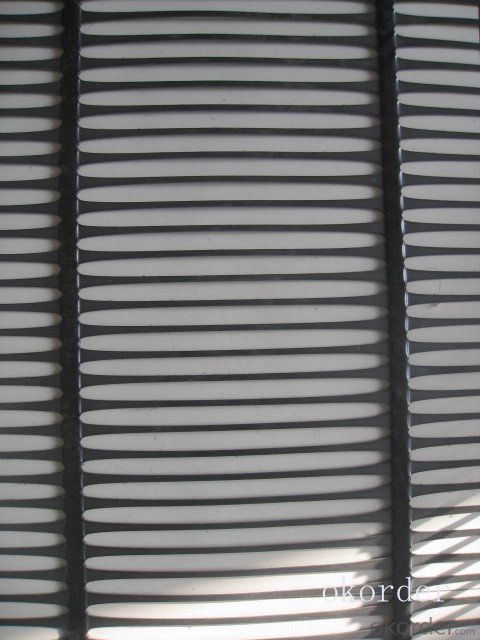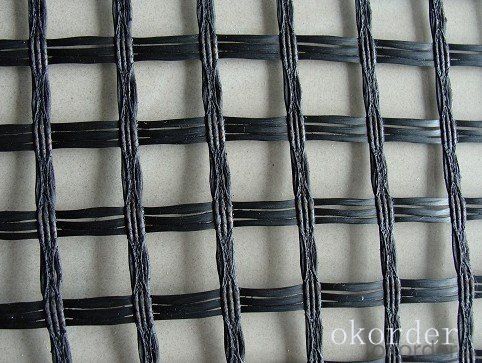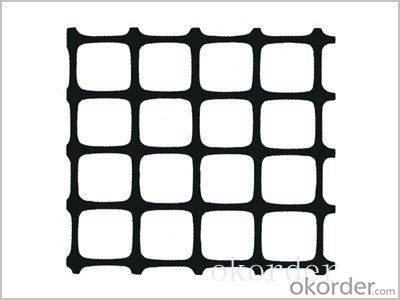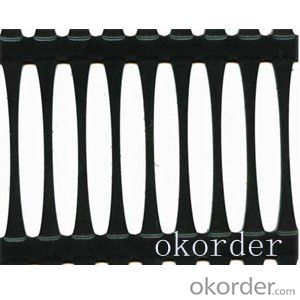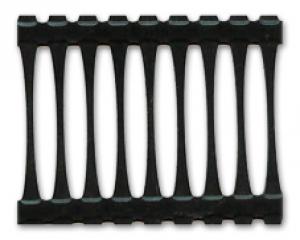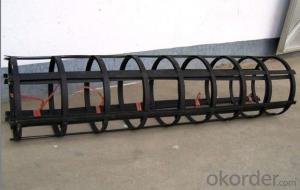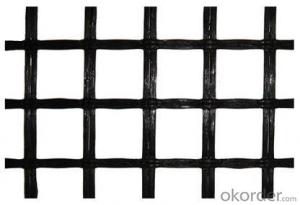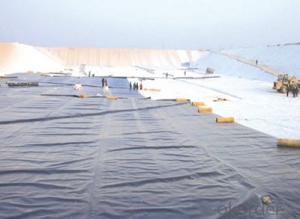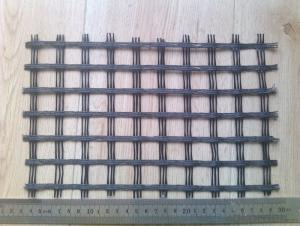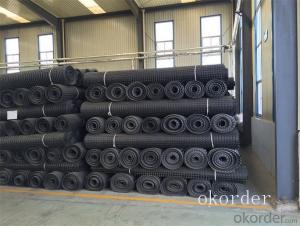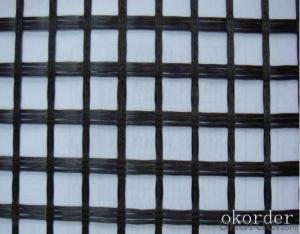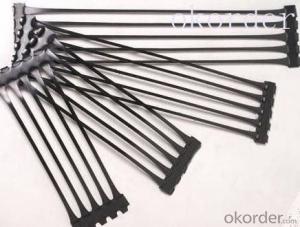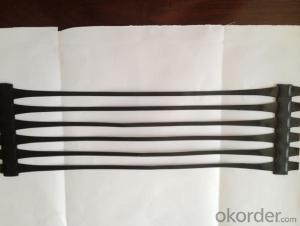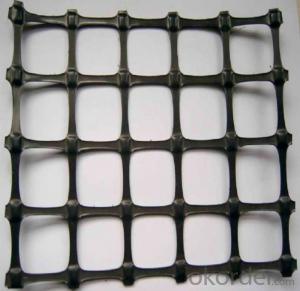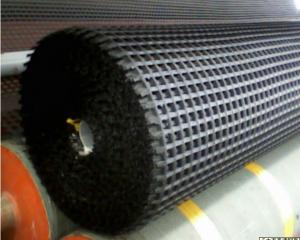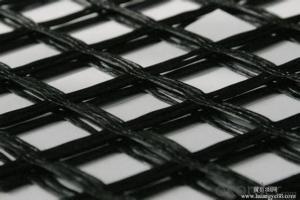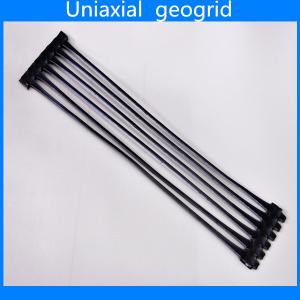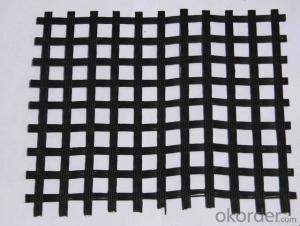High Tensile Strength Steel Plastic Geogrids for Slope Erosion Geocells Made in China
- Loading Port:
- China main port
- Payment Terms:
- TT OR LC
- Min Order Qty:
- 1000 m²
- Supply Capability:
- 1000000 m²/month
OKorder Service Pledge
OKorder Financial Service
You Might Also Like
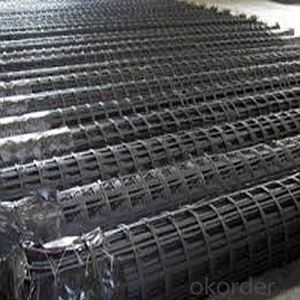
Product Introduction
Type:
Geogrids
Place of Origin:
Anhui, China (Mainland)
Brand Name:
CMAX
Model Number:
Biaxial
Product Introduction
The Steel plastic composite geogrid is by the high tensile steel wire, after the special handing, with the polyethylene(P. E), and increase other assistants, though squeezes out causes it excel to become the mult-skill anti-to pull the banding, and the surface has the rough embossing, for excel in reinforcement earthwork belt. From this as soon as the single belt, after vertical, according to decides the spacing knitting horizontally or clamps gathers the arrangement, uses the ultrasonic welding to molding.
The Steel plastic composite geogrid is by the high tensile steel wire, after the special handing, with the polyethylene(P. E), and increase other assistants, though squeezes out causes it excel to become the mult-skill anti-to pull the banding, and the surface has the rough embossing, for excel in reinforcement earthwork belt. From this as soon as the single belt, after vertical, according to decides the spacing knitting horizontally or clamps gathers the arrangement, uses the ultrasonic welding to molding.
Our Service
Quality assurance
1.On a regular basis or as per your request,we entrust national testing agencies to conduct quality inspections
2. Strictly in accordance with the ISO9001-2008 international quality system standard,we monitor and manage the whole process throughout production,quality testing,and measurement to ensure product quality
3. For quality-related construction delay or substandard construction(except for damage or losses due to customer’s responsibility or irresistible natural disasters),we have refunding,replacement,and repair services.We will respond to customers’ feedbacks on quality issues within 24 hours.
Packaging & Shipping
Packing: PLASTIC FILM INSIDE, AND WOVEN BAG OUTSIDE
Shipping: About 15 days after receipt the deposit
FAQ:
Q: What kind of payments does jenor support?
A: T/T, L/C, Cash are accepted.
Q: Do you charge for the samples?
A: Accordeing to our company policy, the samples are free, we only charge the freight fee. And we will return the freight fee during the next order.
Q: Can you produce according to customers' design?
A: Sure, we are professional manufacturer, OEM and ODM are both welcome.
Q: Do you have other products?
A: Yes, please check the pictures:
- Q: Can geogrids be used in soil stabilization for airport runways?
- Yes, geogrids can be used in soil stabilization for airport runways. Geogrids are commonly employed in civil engineering projects, including airport runway construction, to enhance the stability and load-bearing capacity of the soil. They are effective in preventing soil erosion, reducing settlement, and improving the overall performance of the runway by distributing loads and reinforcing the soil.
- Q: Do geogrids have any impact on groundwater?
- Yes, geogrids typically have no impact on groundwater as they are non-permeable materials used primarily for soil stabilization and reinforcement purposes.
- Q: What is the difference between a woven and a non-woven geogrid?
- A woven geogrid is made from weaving durable synthetic fibers together, creating a strong and flexible grid structure. On the other hand, a non-woven geogrid is formed by bonding synthetic fibers together using heat and pressure, resulting in a uniform and stable matrix. Overall, the key difference lies in the manufacturing process and structure, with woven geogrids offering higher tensile strength and stability, while non-woven geogrids provide better filtration and drainage properties.
- Q: What are the factors that affect the tensile strength of geogrids?
- The factors that affect the tensile strength of geogrids include the type and quality of materials used in their construction, the manufacturing process, the geometry and configuration of the grid, the level of stress applied during installation, and the environmental conditions in which they are used. Additionally, factors such as temperature, moisture content, and the presence of chemicals or other contaminants can also influence the tensile strength of geogrids.
- Q: Are geogrids effective in stabilizing embankments for pipeline crossings?
- Yes, geogrids are effective in stabilizing embankments for pipeline crossings. Geogrids provide reinforcement and enhance the stability of the soil, preventing erosion and minimizing settlement. They distribute loads efficiently, increasing the overall strength of the embankment and ensuring long-term stability for pipeline crossings.
- Q: Plastic grid plate making process
- The plastic grid plate is also called the civil grille also known as the geogrid is made of polypropylene, polyvinyl chloride and other high molecular polymer thermoplastic or molded from the two-dimensional mesh or with a certain degree of three-dimensional grid screen,
- Q: How do geogrids improve the performance of geosynthetic-reinforced slopes in seismic zones?
- Geogrids improve the performance of geosynthetic-reinforced slopes in seismic zones by providing increased stability and reducing the potential for slope failure. These geosynthetic materials act as a reinforcement layer within the slope, distributing and dissipating the seismic forces more effectively. By enhancing the tensile strength and shear resistance of the slope, geogrids minimize the displacement and deformation during seismic events, thereby enhancing the overall stability and safety of the slope in seismic zones.
- Q: How is the strength of a geogrid determined?
- The strength of a geogrid is determined through various laboratory tests and calculations that evaluate its tensile strength, creep resistance, and other mechanical properties. These tests involve applying force to the geogrid in different directions to measure its ability to withstand pulling, stretching, or shear forces. The results of these tests help determine the geogrid's strength and its suitability for specific applications in civil engineering and soil stabilization projects.
- Q: Can geogrids be used in mining and geotechnical applications?
- Yes, geogrids can be used in both mining and geotechnical applications. Geogrids are commonly used in mining to reinforce soil and rock slopes, stabilize excavations, and provide support for haul roads and mine walls. In geotechnical applications, geogrids are used to reinforce soils, increase slope stability, and improve the performance of retaining walls, embankments, and foundations.
- Q: Where is the best geogrid to do?
- Geogrid is divided into four categories: plastic geogrid, steel plastic geogrid, fiberglass geogrid and fiberglass polyester geogrid. Two way, single main look at the design, there are many domestic manufacturers of geotechnical materials, product quality depends on the order contract, to meet the national standards have a lot of. It's all about there.
Send your message to us
High Tensile Strength Steel Plastic Geogrids for Slope Erosion Geocells Made in China
- Loading Port:
- China main port
- Payment Terms:
- TT OR LC
- Min Order Qty:
- 1000 m²
- Supply Capability:
- 1000000 m²/month
OKorder Service Pledge
OKorder Financial Service
Similar products
Hot products
Hot Searches
Related keywords
